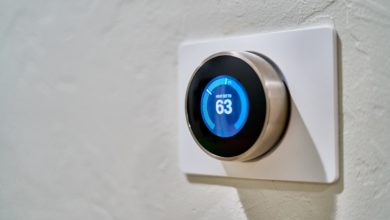After long days and nights of blustery cold in the winter months, everyone looks forward to spring and summer. Unfortunately, summer days can be quite hot and humid, requiring the constant use of air conditioning which leads to increased electricity bills. How can one avoid turning on air conditioning in summer? Is it remotely possible to have a cool house in summer without air conditioning? Yes, it is and we shall show you how…
Tips For Keeping Your House Cool In Summer
- Use a fan: A fan would cool up to a room, making it feel ten times cooler while using up only ten percent energy as a central cooling system. In these days of high tech products, there are ceiling fans that are connected to apps which enable you to regulate and put it on and off and also set the speed you want without having to reach the fan. You can also set your fan to rotate anti-clockwise at the highest speed. This airflow generated would create a wind chill breeze that would help to cool the house.
- Always keep your window blinds closed: This may seem ridiculous but keeping your blinds closed during the hottest part of the day would keep out the sun and help to insulate your windows making the room cooler. It is advised that you leave your windows open when the weather has cooled at night and wake up early to close all the windows and blinds because your house would have cooled off during the night and leaving the windows open would dissipate the cool air and let in the heat from outside.
- Use blackout window blinds: This would block out the sun and reflect the heat back outside leaving your room cooler. If you have plastic horizontal or vertical blinds, you’ll do well to change them to sun blocking blinds.
- Keep the use of your oven at a minimum: Summer is actually a time for cookouts and takeouts; reducing the use of your oven would help to reduce the heat in your home. It would be a good time to make use of your outdoor kitchen and prepare your meals outside. For those living in apartments, you would need to look for recipes that don’t require the use of an oven and also keep the use of your stove to the barest minimum.
- Leave the attic door open for airing: Get a fan to blow air into the open attic all through the night. This would draw the hot air out of the attic and circulate cool air into the house.
- Get a dehumidifier: A dehumidifier helps to dry out the air in the house leaving it cooler. Look out for the one that is big enough for the biggest room in the house; more like the family room or the room where everyone stays together more often. Remember to turn it off at night.
- Invest in some home improvements: If you are a homeowner, you should look into the option of making some improvements on your home. Some of the options to consider include the following: Reinforce windows that face the sun with insulators. If you have single-pane windows, replace them with double pane ones. Seal cracks around your windows as they allow heat to come into the room. Add awnings to your windows and consider covering the patio to provide some shade. As a long-term solution, plant trees if you don’t have any. Though it’s obvious, permit us to mention that trees would help shade your house from the sun while helping to circulate cool breeze in your environment.
- Apply the fan and ice cooling hack: Get a mixing bowl and fill it with ice whether it be loose ice or an ice pack. Place in front of a big fan in such a way that the fan blows out the ice in a chilled and misty form. This has been discovered to help cool a room without piling up electric bills.
- Keep the use of heat-generating appliances and equipment to the barest minimum: Appliances like a washing machine, dryer, desktop, and laptops generate a lot of heat and if you want to avoid always putting on your air conditioner, use them less often during the heat or use them when you can put on your air conditioning.
- Use exhaust fans to draw out heat: Most kitchen and bathrooms have heat extractors or exhaust fans. Ensure that they are working well because they help to draw out heat and steam from the kitchen when you are cooking and from the bathroom at bath times.
- Use whole house fan: This appliance is a vent that’s usually placed in a hallway. When you turn on the control knob, the vent opens up and the fan starts to rotate. It draws out the heat and hot air from the house thus making the house cooler.
- Use energy saving bulbs: The regular non-energy saving bulbs generate a lot of heat when they are lit but with energy saving bulbs, you not only conserve energy, the heat in your home is reduced.
Conclusion
These are some tested and proven ways that you can keep your home cool without turning on your air conditioning. This is not in any way an exhaustive list but by the time you go through all these steps, you would not need an air conditioning unit for the summer months. In addition to keeping your home cool without air conditioning, you can also keep yourself cool by drinking plenty of water and iced beverages, having a cold bath before bedtime, sleeping on sheets that have been refrigerated before bedtime and sleeping with loose cotton nightclothes or in the buff if you can! You don’t need to run up huge electricity bills during the summer months; learn how to utilize your seasonal cooking equipment and even employ the old fashion method of sun drying your clothes; that way you wouldn’t need to use your oven, dryer, and other heat-generating appliances often.





